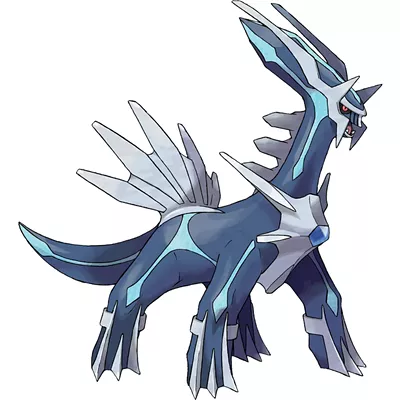I wonder if my father-in-law will color in the daruma's eye this year. A newly bought daruma, the traditional round, red, white and black Japanese good luck doll, comes with both eyes blank. One New Year's tradition is that when you take the new daruma out of the box, you draw a black pupil in one of the eyes. At the end of the year, if the year was lucky, you color in the second pupil. My Japanese then-wife told me that in the spirit of gratitude, her father always colored in the second eye, no matter what.
The Japanese word for snowman is yuki-daruma, or "snow daruma." During the two decades I lived in Tokyo, it never snowed enough to make a yuki-daruma, or to have a yuki-dama-senso (snowball fight) for that matter, so I've never seen a Japanese snowman in the wild. However, I imagine one might look like another traditional mainstay of the Japanese New Year, the kagami-mochi, which means, inexplicably, the "mirror rice cake." A kagami-mochi minimally consists of a hard white loaf of pounded rice cake, a bit larger than a double-decker hamburger, with another smaller one on top, surmounted by a Mandarin orange. Pounding rice cakes is such an established tradition in Japan that the image Japanese people see in the face of the moon is a rabbit pounding rice cake with the traditional long wooden hammer. If you or your pet rabbit are disinclined to make your own, never fear, in the weeks leading up to New Year's, supermarkets and convenience stores prominently display kagami-mochi for purchase, usually coated with a layer of plastic to keep them from drying out while displayed in your gen-kan, or the entrance to your home where guests take off their shoes.
I feel a certain reverence for the kagami-mochi, which is traditionally eaten on New Year's morning in an otherwise workaday miso soup. It is no ordinary miso soup, however, as failing to eat the kagami-mochi is unlucky, and if my own experience is to be believed, very unlucky indeed.
A coworker, a fellow gai-jin (foreigner), recounted a harrowing tale of how he had chucked his own kagami-mochi into the rubbish, only to be immediately beset by an onslaught of plagues the likes of which only Pharaoh has seen. Sudden illness, broken pipes, accidents, broken dishes and other accidental damage, car trouble, computer trouble, and so the list went on. Desperate, he and his Japanese wife went dumpster-diving to retrieve the sacred ceremonial foodstuff. His advice to me was, "Even if it's gotten hard as a rock, even if it's rotting, eat the thing!"
Word to the wise, I think.
Japanese New Year is a combination of spring cleaning, Thanksgiving, Christmas and Japan's Got Talent. Instead of drinking without regard for personal safety and kissing each other at midnight to the explosions of fireworks, Japanese clean the house and go to bed early. All TV stations carry singing of traditional enka songs. If the new year is to be rung in, one goes to a Shinto shrine to wait until midnight, but getting up early and going to a shrine is also a practice. Despite the ungodly hour and the cold, there are large crowds.
One can always buy o-mamori, or good luck charm amulets. These are great to hang off your rearview mirror, by the way, especially if it's an "avoid death in car accidents" o-mamori. Just this time of year, decorative wooden arrows with no tips, or hamaya, are available at the shrines. Watch out, demons!
The big event is the New Year's morning meal, opened with a communion-like drinking of ume-shu, or plumb wine (plum), from tiny, flat red-enameled sake bowls. Traditionally one eats only o-sechi-ryori. The dishes are elaborate, decorative, come in dozens of different types, and are typically ordered from special shops. The kicker is that they are all cold, the idea being that the women who might otherwise be cooking are not obliged to prepare anything, since it's already done and in the fridge, ready to serve. My mother-in-law would nevertheless prepare a lot of hot food in addition to the o-sechi-ryori, including deep-fried shrimp. We also had sushi, which was delicious, and cold, but not necessarily on the traditional menu. During the feast, children are given little red envelopes with coins inside, o-toshi-dama, five dollars being considered a good haul.
After eating, we lay around on the tatami or lounged at the table, eating large quantities of Mandarine oranges (Mandarin). For some reason, all TV channels are filled with coverage of foot racing events all around the country. The coverage is of a thoroughness only Japan can muster. To take one example, it was on Japanese TV one New Year's morning that I learned about Kathrine Switzer, the first woman to run the Boston Marathon.
Not to give the impression that New Year's is an entirely teetotaling affair, o-sake is often served at shrines, rather like communion wine. On the first day of returning to work, it's traditional for companies to roll out a wooden barrel of sake and break it open with a traditional wooden hammer, whereupon the assembled workers proceed to drink every drop.
Another boisterous company tradition is the bo-nen-kai, or "forget the year party," in the weeks leading up to New Year's, and the less prevalent shin-nen-kai, or "coming year party," in the weeks following. Bars and clubs vie for bookings by companies who send their entire staff for a whole night of drinking, eating and entertainment. Filling up on bo-nen-kai reservations is a make-or-break for Tokyo watering holes.
Even though it's been hard and rotten, I have to eat the kagami-mochi for 2020, or risk even more bad luck. I've faced employment and health care uncertainty, and quarantine from family and friends, but do I color in the other eye on 2020's daruma, in case there was anything to be thankful for? There haven't been any holiday parties, either with turkey or o-sechi-ryori, but whether to grieve it, or celebrate that we survived it, maybe it's time to have a big, online bo-nen-kai to put 2020 behind us. ♦
Jay Dearien is a permanent resident of Japan and lived there from the 1990s through the 2000s. Now a reformed Tokyoite, he's lived for the past 15 years in Moscow, Idaho. He's been a stand-up comedian, drawn comics, invented educational board games, and serves as the local Municipal Liaison for National Novel Writing Month.





















